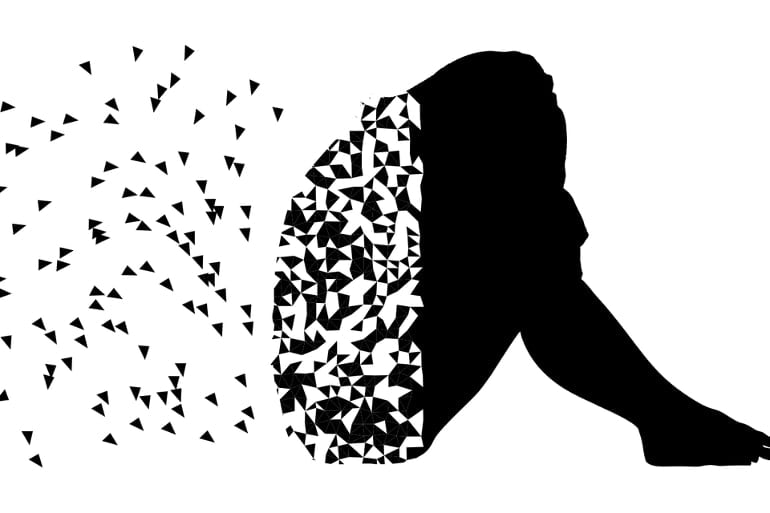Summary: Neuroimaging study reveals neurovascular coupling may be at the root of chronic fatigue syndrome, fibromyalgia, and other disorders.
Source: University of the Sunshine Coast
Vibrant, bubbly and full of energy, 24-year-old occupational rehabilitation consultant Nadia was living her best life. Then the fatigue took hold.
Now, five years since her first symptoms of chronic fatigue appeared, she is taking part in a novel brain imaging study by the University of the Sunshine Coast seeking better, faster ways to diagnose and treat the debilitating syndrome that affects more than 24 million people worldwide.
“I find people do not understand how a twenty-something can be constantly fatigued,” says Nadia, who believes an unknown virus was the trigger for her illness.
“After I recovered from that virus, I was never quite the same. I never regained my energy.”
With no known cause, objective diagnostic test or cure, the study by UniSC’s Thompson Institute could be the key to finally pinpointing the neurobiological origin of chronic fatigue syndrome (CFS), also known as myalgic encephalomyelitis (ME).
Lead researcher Dr. Zack Shan says the world-first research is using MRIs to track brain activity in around 300 study participants to determine how the brain controls its blood flow to match its energy needs, to better understand the disease process of fatigue-related illnesses.
Healthy volunteers may hold the key
As well as ME/CFS, the study is seeking participants with long-COVID and fibromyalgia, a chronic condition causing muscle and bone pain, as well as fatigue, sleep, memory and mood issues.
Healthy volunteers who lead mostly sedentary lives are also vital to the study, to allow researchers to compare brain activity in people with ME/CFS and fibromyalgia from non-sufferers.
“This allows us to analyze and gain insights from the vast amount of information brain imaging provides about how specific areas of the brain differ between people with and without fatigue conditions,” Dr. Shan said.
“If we can determine the factors that cause chronic fatigue syndrome, including a neuromarker or biological indicator–for both ME/CFS and fibromyalgia, we can help diagnose them faster,” he said.
“This could benefit the design of biologically based therapeutic interventions and reduce patients’ frustration by providing an accepted definite cause for their symptoms.”
Identifying abnormal patterns in brain power
Dr. Shan said that although the causes of ME/CFS and fibromyalgia remain unresolved, the well-documented impacts, including profound fatigue, sleep disturbance and cognitive impairments suggest that abnormal brain function plays a crucial role in the underlying disease process.
The brain accounts for 20% of total body energy consumption but has limited or no energy reservoir. Normal function relies critically on the timely matching of local blood flow to neural energy demand.
The researchers believe abnormalities in this process, known as neurovascular coupling, is responsible.

To test this hypothesis, participants are given cognitive tasks during their scans to measure how their brains regulate blood flood in response, and its relationship to fatigue severity. The scans also measure changes to chemical messages in their brains as they complete mental exercises.
Dr. Shan said the results would be used to generate a brain pattern of distributed clusters that predict disease severity, potentially providing a neuromarker for predicting ME/CFS fatigue conditions.
‘It takes pieces of you away’
After a long, frustrating road to her diagnosis, Nadia says the opportunity to help researchers better understand her condition is appealing and she is encouraging others to volunteer.
“This study is so important, it is leading the way for CFS research,” she said.
“Overall, chronic fatigue takes so many pieces of you away. I no longer have that energy to be my normal bubbly self. I feel I’m just trying to get through each day,” she said,
More participants are needed, including those with fibromyalgia, and volunteers in good health. Taking part involves questionnaires, health checks such as blood pressure and wearing an activity monitor.
Those interested in participating in the ongoing study can find information here.
About this neuroimaging research news
Author: Press Office
Source: University of the Sunshine Coast
Contact: Press Office – University of the Sunshine Coast
Image: The image is in the public domain
Original Research: Open access.
“Multimodal MRI of myalgic encephalomyelitis/chronic fatigue syndrome: A cross-sectional neuroimaging study toward its neuropathophysiology and diagnosis” by Zack Y. Shan et al. Frontiers in Neurology
Abstract
Multimodal MRI of myalgic encephalomyelitis/chronic fatigue syndrome: A cross-sectional neuroimaging study toward its neuropathophysiology and diagnosis
Introduction: Myalgic encephalomyelitis/chronic fatigue syndrome (ME/CFS), is a debilitating illness affecting up to 24 million people worldwide but concerningly there is no known mechanism for ME/CFS and no objective test for diagnosis. A series of our neuroimaging findings in ME/CFS, including functional MRI (fMRI) signal characteristics and structural changes in brain regions particularly sensitive to hypoxia, has informed the hypothesis that abnormal neurovascular coupling (NVC) may be the neurobiological origin of ME/CFS. NVC is a critical process for normal brain function, in which glutamate from an active neuron stimulates Ca2+ influx in adjacent neurons and astrocytes. In turn, increased Ca2+ concentrations in both astrocytes and neurons trigger the synthesis of vascular dilator factors to increase local blood flow assuring activated neurons are supplied with their energy needs.
This study investigates NVC using multimodal MRIs: (1) hemodynamic response function (HRF) that represents regional brain blood flow changes in response to neural activities and will be modeled from a cognitive task fMRI; (2) respiration response function (RRF) represents autoregulation of regional blood flow due to carbon dioxide and will be modeled from breath-holding fMRI; (3) neural activity associated glutamate changes will be modeled from a cognitive task functional magnetic resonance spectroscopy. We also aim to develop a neuromarker for ME/CFS diagnosis by integrating the multimodal MRIs with a deep machine learning framework.
Methods and analysis: This cross-sectional study will recruit 288 participants (91 ME/CFS, 61 individuals with chronic fatigue, 91 healthy controls with sedentary lifestyles, 45 fibromyalgia). The ME/CFS will be diagnosed by consensus diagnosis made by two clinicians using the Canadian Consensus Criteria 2003. Symptoms, vital signs, and activity measures will be collected alongside multimodal MRI.
The HRF, RRF, and glutamate changes will be compared among four groups using one-way analysis of covariance (ANCOVA). Equivalent non-parametric methods will be used for measures that do not exhibit a normal distribution. The activity measure, body mass index, sex, age, depression, and anxiety will be included as covariates for all statistical analyses with the false discovery rate used to correct for multiple comparisons.
The data will be randomly divided into a training (N = 188) and a validation (N = 100) group. Each MRI measure will be entered as input for a least absolute shrinkage and selection operator—regularized principal components regression to generate a brain pattern of distributed clusters that predict disease severity. The identified brain pattern will be integrated using multimodal deep Boltzmann machines as a neuromarker for predicting ME/CFS fatigue conditions. The receiver operating characteristic curve of the identified neuromarker will be determined using data from the validation group.
Ethics and study registry: This study was reviewed and approved by University of the Sunshine Coast University Ethics committee (A191288) and has been registered with The Australian New Zealand Clinical Trials Registry (ACTRN12622001095752).
Dissemination of results: The results will be disseminated through peer reviewed scientific manuscripts and conferences and to patients through social media and active engagement with ME/CFS associations.







